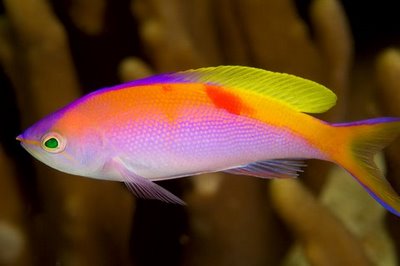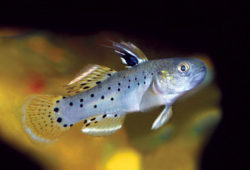The Bartlett’s Anthias
The article gives you some information on The Bartlett’s Anthias. While many anthias species should be kept by only advanced aquarists, the intermediate aquarist may want to attempt keeping a small shoal of beautiful Bartlett’s anthias.

The Bartlett’s anthias (Pseudanthias bartlettorum) is a stunning saltwater fish commonly available to marine aquarium hobbyists. While an anthias is not the right choice for all aquarists, the intermediate aquarist prepared to meet the Bartlett’s anthias’ husbandry needs should have little trouble keeping this fish healthy. This article covers some basic natural history and husbandry information.
Contents
Bartlett’s Anthias Natural History
The Bartlett’s anthias, which also goes by the names Bartlett’s fairy basslet or redbloth perchlet, is a small (to about 9 cm), tropical Pacific fish that inhabits reefs around Palau, the Caroline Islands, the Marshall Islands, Kiribati, Tonga, and likely other places as well. This anthias is usually found in water deeper than four meters and up to about 30 meters in depths. It commonly occurs in large aggregations of a few males and several dozen females and juveniles.
In addition to being a beautiful fish, the Bartlett’s anthias is behaviorally quite interesting. Most notably, this fish is capable of social mimicry when sharing the same habitat as certain species. For example, the Bartlett’s anthias can effectively mimic the midas blenny (Ecsenius midas) and the more closely related dispar anthias (P. dispar). Mimicry is a well-recorded, albeit still relatively little understood, adaptation common in many marine species.
Bartlett’s Anthias Care in a Tropical Saltwater Aquarium
The Bartlett’s anthias is an excellent choice for an established peaceful, community reef tank of at least 55 gallons with a connected, mature refugium. The aquarium should have sufficient quantities of live rock and strong water movement provided by a return pump that cycles the tank at least ten times per hour and supplementary powerheads or a closed loop system. Sump-based filtration with an excellent protein skimmer is recommended. It is best if the upper third of the tank is open to provide plenty of swimming room over the reef.
A Bartlett’s anthias should be added relatively early in the stocking plan, so that it may become established before other fishes have established their territories. While it is rare for the Bartlett’s anthias to harm or harass any other animals in the system, including coral, it is not uncommon for some larger invertebrates to pose a risk to the Bartlett’s anthias. In particular, large anemones and crabs may prey on the Bartlett’s anthias.
As a plaktivore, the Bartlett’s anthias will feed in the water column. It prefers to feed frequently, if not continuously. At the very least, a tank housing a Bartlett’s anthias should be fed at lease several times a day. Better yet, the display tank will have an attached, mature refugium, which will provide a steady food source of zooplankton for the Bartlett’s anthias. Appropriate foods include small bits of marine flesh and commercially available foods formulated for carnivores and omnivores.
Keeping Several Bartlett’s Anthias Together
It is heartily recommended to keep a small shoal of Bartlett’s anthias together in the home aquarium. Plan on keeping one male with three or five females, but be sure each anthias has approximately 40 gallons of aquarium space. As such, three females and one male would be an appropriate number of anthias in a 135-gallon aquarium.



